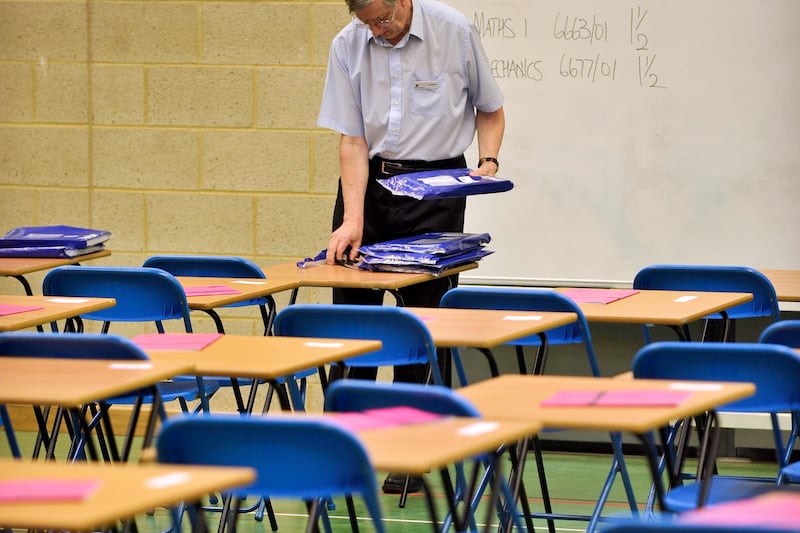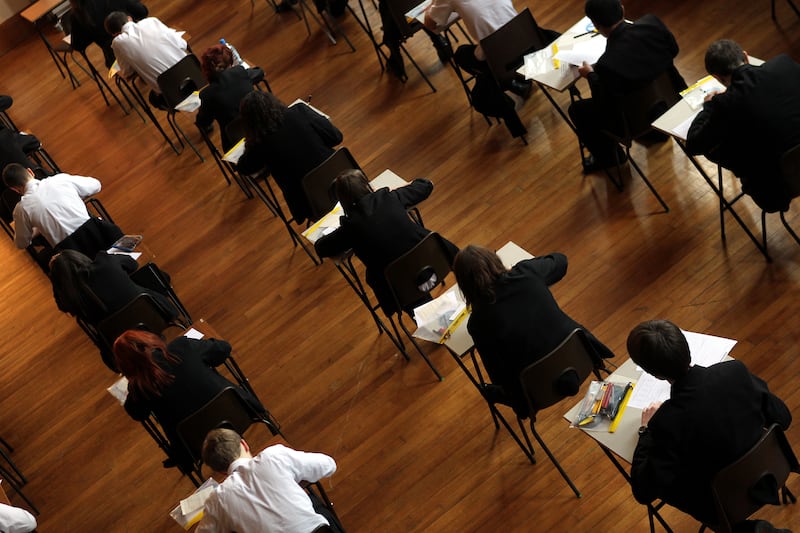Fewer school leavers in the UK have been accepted onto a higher education course this year – and the number of disadvantaged 18-year-olds going to university has fallen, figures show.
A total of 270,350 British 18-year-olds had been accepted onto a course some 28 days after students received their A-level results, according to newly released data by university admissions service Ucas.
This figure is down 1.8% on last year (275,390), but up 12.9% on 2019 (239,460) – the summer before the pandemic.
This year, the number of 18-year-olds from the most disadvantaged areas in the UK accepted has fallen slightly – from 31,900 in 2022 to 31,090 this year.
But it is up 19.5% on 2019 when 26,010 18-year-olds from the most disadvantaged backgrounds in the UK were accepted onto a course.
The data shows that a record number of British 18-year-olds secured a place at a university or college through clearing 28 days after A-level results day.
Clearing is available to students who do not meet the conditions of their offer on A-level results day, as well as those who did not receive any offers.
Students who have changed their mind about what or where they wish to study, and also those who have applied outside the normal application window, can also use the process.
Overall, 38,140 18-year-olds from the UK secured a place through clearing – which is up 14.6% on 2022 when 33,280 secured a place through this route.
Ucas has said growing numbers of students are using clearing to switch courses despite having secured their original firm choice.
Overall, 16,040 UK 18-year-old applicants found a new course after releasing themselves from a previously held choice.
This is up from 14,760 in 2022 and 12,170 in 2019.
Sander Kristel, interim chief executive at Ucas, said: “In the past, clearing was perceived as just being a process to support students that didn’t meet their offer to get a place at a remaining course. This couldn’t be further from the truth – this year we saw a record number of students secure a place at one of the 30,000 courses available.
“We’ve also seen record numbers of students exercising choice later in the cycle, revisiting their options for a range of reasons personal to them.”
He added: “For me, today’s numbers show that we need to continue our collective efforts in closing the gap in participation for those from the most disadvantaged backgrounds.”
Geoff Barton, general secretary of the Association of School and College Leaders (ASCL), said: “It’s great to see students using the clearing system to shop around for the courses that best suit them.”
He added: “The part of the Ucas data that does worry us, however, is that there has been a decline in the number of disadvantaged 18-year-olds going to university compared to last year.
“While this has to be set in the context that it is still an increase compared to 2019, we really do need the trajectory to continue to go in the right direction.
“It is likely that young people from disadvantaged backgrounds are deterred by the cost of going to university and we would encourage the government to look at how they can be better supported.”
A Universities UK (UUK) spokeswoman said: “The number of students who have successfully chosen a course and university at this point in the cycle demonstrates the continued strong appeal of university for anyone considering their next steps in education, and we would congratulate anyone who has made such an important decision.
“These figures do indicate that the sector must continue efforts to drive social mobility.”








